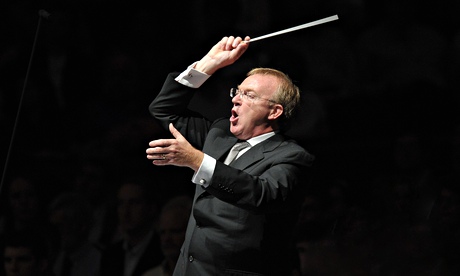
There have been a number of posthumous premieres since John Tavener died last November, but nothing on the scale of Flood of Beauty. A 100-minute setting of the 100 stanzas of the Sanskrit Saundarya Lahari, introduced to the Tavener faithful at the Barbican by the Britten Sinfonia, Britten Sinfonia Voices, New London Choir and assorted soloists, valiantly conducted by Martyn Brabbins.
Strictly speaking, Flood of Beauty isn’t a late work – Tavener completed it without a commission in 2007, and the Barbican stepped in much more recently to mount the premiere. But the Barbican Hall is not the right place to hear a work in which the singers and orchestral players are meant to be dispersed to all points of the compass, with the conductor and the soloists – soprano (Allison Bell here), baritone (Marcus Farnsworth) and cello (Natalie Clein) – at its centre – and a group on Indian instruments, sitar (Sheema Mukherjee), tanpura (Omar Shahryar) and tabla (Kuljit Bhamra) off to one side, acting like a continuo group in a baroque opera. Three of the groups were stationed in the balcony and were mostly inaudible from a seat in the stalls, so the spatial effects that are clearly a major part of Tavener’s concept went for nothing.
That certainly didn’t help to elucidate such an ambitious work, which is bound together with structural symmetries. Its text – translated on screens on both sides of the hall – is essentially a celebration of the Divine Being, as personified in feminine beauty, though some of its imagery – such as a line like “her heavy breasts like elephant ears” – loses a bit in translation. Tavener’s layering of chorus, soloists and instrumentalists is constantly varied, though it was hard to appreciate those subtleties; the cello solos that end each of the five cycles, coloured by tintinnabulating gongs and beautifully played by Clein, worked well, and the brassy grandeur of the fourth cycle also had an impact. But much more was missing entirely.
• On BBC iPlayer until 5 October.

